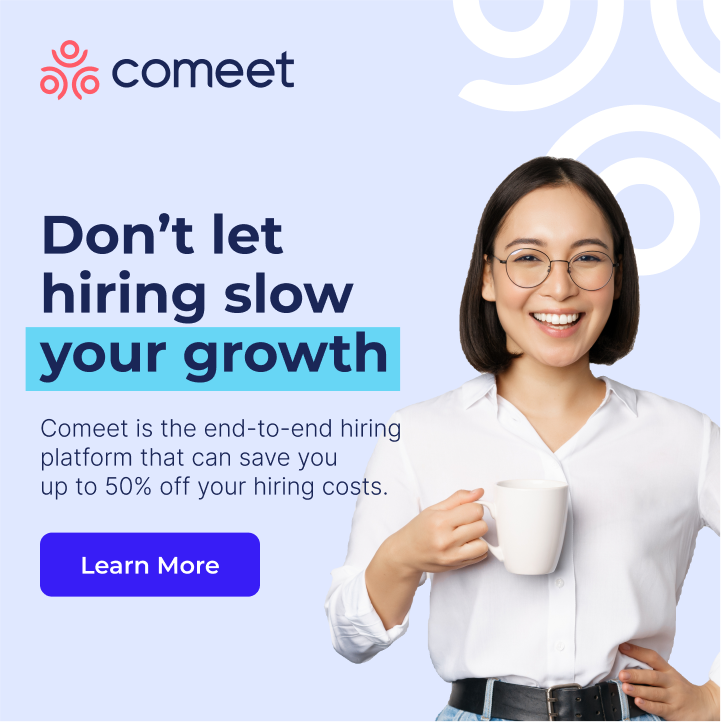With so many lists of interview questions available to professionals, a structured interview may seem like the only way to approach this part of the hiring process. However, the unstructured interview format is a popular choice for some human resource teams. What is an unstructured interview? How can it help identify top talent? Learn how it differs from structured job interviews and if it’s appropriate for your team in our unstructured interview guide.
The Unstructured Interview Explained
An unstructured interview is one where there is no preset list of questions or stated parameters for what will be asked. This doesn’t mean there is no planning, or that a list of goals isn’t identified in advance.
The flow of an unstructured interview is more like a normal everyday conversation, with some open-ended questions addressing more than just job-specific topics. Since there are no “must-ask questions” with this qualitative research method, the interviewer can improvise as needed and ask questions based on the answers they hear during their conversation.
An unstructured interview can also be called a non-directive interview.
What is the Difference Between a Structured and Unstructured Interview?
While both can be used in a variety of situations, the main difference between an unstructured interview and structured interview is that the structured interview questions are written out ahead of time and asked of all candidates. Unstructured, on the other hand, asks different questions of different candidates and lets the conversation prompt what’s asked.
How to Conduct an Unstructured Interview
Anyone hoping to use the unstructured interview to their advantage should keep these tactics in mind:
- Don’t ask leading questions. Let the candidate guide where the answers will go.
- Probe beyond the expected answer. If the interviewee’s response is too short or leads to more questions, gently prod for additional detail by expanding on your original question or asking another related one.
- Address concerning statements, factual errors, and inconsistencies. Rephrase the same question multiple ways if it appears it may produce a different answer.
- Write down what the candidate says in their own words. Allow their answers to stand on their own without your interpretation or interference.
- Always keep the goal in mind. Don’t lose control of the conversation, allow for unnecessary banter, or let the candidate steer the direction of the interview.
Because unstructured job interviews are more like an everyday conversation, they could cause you to miss out on asking the important questions. If you must use this method to get the details out of your next potential new hire, use it within the framework of more structured recruiting tools so there’s less danger of the essentials falling through the cracks.
Examples of an Unstructured Interview Format
Some of the most common unstructured interview types include:
Telephone interview. Use this method to eliminate candidates from the large pool of interested applicants by using a general conversational tone to ask more intuitive questions. Those who make the cut can then be scheduled for face-to-face or panel interviews.
Face-to-face interview. One interviewer meets with one candidate in this arrangement where the questions aren’t decided in advance. The interviewer will lead, of course, but the questions are chosen based on what the candidate shares during a brief introduction.
Sequential interview. More than one interviewer participates in this conversation, with each taking their turn to ask questions. Only one interviewer is in the room at a time and forms their own opinion of their time with the candidate. Interviewers meet to compare their findings.
Panel interview. This works much like the sequential interview, except all of the interviewers are in the room at the same time, taking turns, or peppering the conversation with their own questions.
Examples of Unstructured Interview Questions
Since the beauty of this interview type is that it’s flexible, these examples are simply suggestions. Use these as a starting point for asking unplanned questions:
- Tell me more about yourself.
- What made you interested in this opportunity?
- What do you do in your spare time?
- What’s your expected salary?
Advantages and Disadvantages of an Unstructured Interview
Depending on your management style, the advantages of the unstructured interview could be significant. What could be more fun than sitting down and chatting about the weather, food, sports, or last night’s episode of a popular streaming series?
Advantages
The benefits of the unstructured interview include:
- Flexibility to dig deeper on topics that become relevant during questioning
- Opportunity for the discovery of answers not addressed by standard questions
- Qualitative data collection through asking comprehension questions, which let candidates tell you, in their own words, how they would address problems
- Participant observation in a more relaxed setting that’s designed to uncover the candidate’s true personality, working style, and interest in the company
- Potential to learn more about the candidate’s personality, how they would interact with other team members, and potential social interaction obstacles due to inadequate communication skills
Disadvantages
No interview technique is perfect. The downsides of unstructured interviews are:
- The expense of training and using this technique can be greater, as it requires a more skilled interviewer and an ability to think of new questions on the fly
- The burden of taking more time; unstructured interviews are often time-consuming because take longer for both parties to “warm up” to one another before getting to a point where a relevant discussion occurs
- Inability to compare interviews between interviewers. If different questions are asked, there is no set idea of what makes a “good” interview across departments
Of all the disadvantages of unstructured interviews, however, bias is the most concerning. Because the format focuses on personality and conversational “flow” rather than skill set, qualifications, and facts, there’s the risk of charm or charisma leading the interview. When too much emphasis is placed on these soft, immeasurable interview factors, unconscious bias is bound to creep up.
Roman philosopher Seneca’s general view was that “a successful hire is what happens when interview preparation meets a qualified and promising candidate.” If the focus is on anything but qualifications, there’s a real risk of being led astray, no matter how warm the conversation.
When Should You Use an Unstructured Interview?
Unstructured interviews can be used as a screener at the beginning of the interview process, such as during a phone interview, to help alert you to red flags. They also work well at the end of an interview series to help get a better feel for the personality of a candidate.
Are you looking for ways to improve your interview process? At Comeet, we strive to help turn our users into “interviewing experts.” Learn more about how we can change the way you interview today.





























